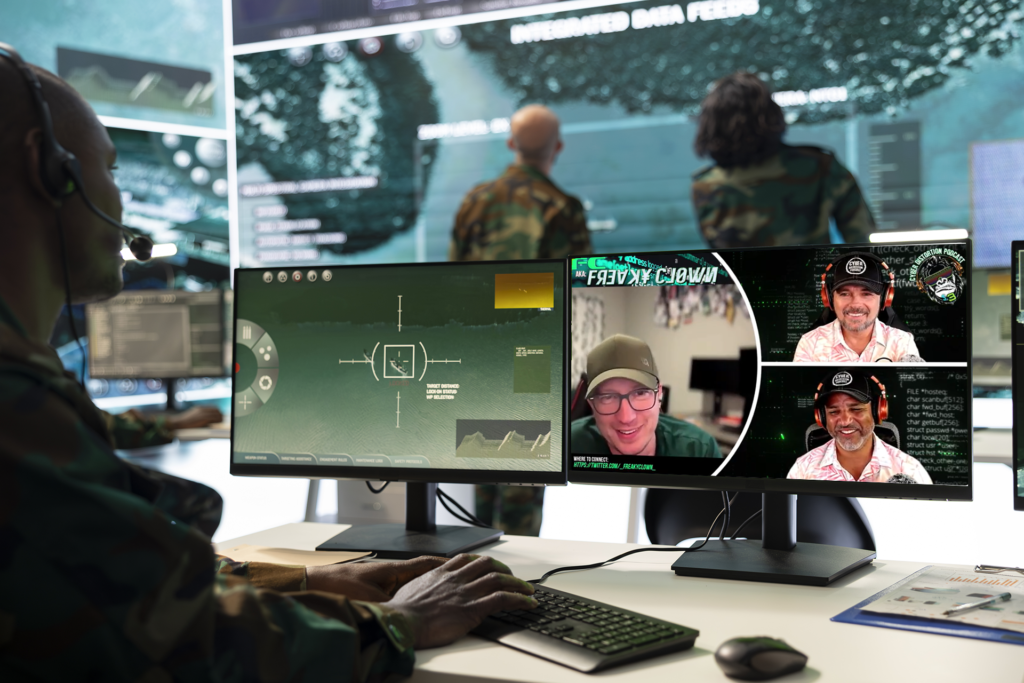The term “weaponize” is often thrown around in discussions about artificial intelligence (AI), invoking images of robotic armies or autonomous killer drones. While these possibilities exist and are deeply concerning, the concept of weaponizing AI extends far beyond physical battlefields. In reality, the term can refer to any malicious use of AI technology—be it for cyberattacks, disinformation campaigns, or the exploitation of economic and social systems. Let’s break down what it really means to weaponize AI and why this emerging threat needs to be addressed.
1. AI as a Tool for Cyber Warfare
One of the most common ways AI can be weaponized is through its use in cyberattacks. AI can significantly enhance the capabilities of malicious actors by automating sophisticated tasks that would otherwise require manual effort. Attackers can use AI for:
- Adaptive Malware: AI can be integrated into malware, allowing it to evade detection by learning how cybersecurity tools work and constantly altering its code to avoid being caught. This makes it increasingly difficult for traditional defenses to keep up.
- Automated Phishing: AI can generate personalized phishing attacks by analyzing data about a target from social media, emails, and other sources. By learning what the target is likely to respond to, AI can increase the success rate of these campaigns.
- AI-Powered Exploits: Attackers can use machine learning models to discover new vulnerabilities in software or networks, accelerating the time to find weaknesses and potentially compromising systems more effectively.
2. AI for Disinformation and Psychological Operations
AI’s ability to analyze vast amounts of data, generate content, and even impersonate real people has made it a powerful tool for disinformation and psychological operations (PSYOP). Here are some examples of how AI can be weaponized in the information space:
- Deepfakes: AI can create convincing fake videos of people saying or doing things they never did. These deepfakes can be used for political manipulation, defamation, or to incite violence or unrest.
- Automated Trolls and Bots: AI-driven bots can flood social media platforms with false information, amplify conspiracy theories, or sow discord by promoting divisive content. These tactics are increasingly being used in both domestic and international contexts to influence public opinion and destabilize societies.
- Content Manipulation: AI models can create fake news articles, doctored images, and misleading narratives, spreading disinformation on a scale that was unimaginable just a few years ago.
3. AI in Military Applications
While cyber warfare and disinformation are more intangible forms of weaponization, AI also plays a direct role in modern military applications. Nations are investing in AI to improve the effectiveness and efficiency of their military operations, but the risks of such development are profound:
- Autonomous Weapons: AI systems are being designed to control drones, tanks, and other weapons platforms with minimal or no human intervention. These autonomous systems can identify and attack targets, but this raises significant ethical concerns—especially regarding accountability for harm.
- Predictive Warfare: AI can analyze patterns in military operations and intelligence to predict enemy actions. While this might improve defense strategies, it also increases the potential for preemptive strikes based on flawed algorithms or biased data.
- Enhanced Surveillance: AI is used for real-time analysis of surveillance data, improving reconnaissance and the identification of targets. However, its use in this way can also extend to suppressing dissent and infringing on individual freedoms, especially in authoritarian regimes.
4. Economic and Social Weaponization
AI can be used to exploit vulnerabilities in economic and social systems, causing widespread disruption:
- Market Manipulation: AI algorithms can engage in high-frequency trading, potentially manipulating financial markets by exploiting microsecond differences in pricing. Malicious actors might leverage AI to generate false market trends or engage in insider trading by analyzing patterns at a level that humans cannot match.
- AI in Social Control: In some cases, AI is used to exert control over populations. For example, AI can be used for mass surveillance, tracking citizens’ movements and behavior. Coupled with facial recognition technology, governments can weaponize AI to suppress political opposition or monitor dissent in real time.
- Job Displacement as a Tactic: Although AI promises efficiency, malicious actors could use it to systematically automate jobs, especially in sectors vulnerable to economic sabotage. This could lead to economic destabilization by causing mass unemployment in critical industries.
5. Ethical and Legal Concerns
The weaponization of AI raises several ethical and legal questions. Who is accountable when an AI system causes harm? How can we prevent bias in AI algorithms from disproportionately affecting vulnerable populations? What laws and treaties need to be put in place to regulate AI’s use in warfare or disinformation campaigns?
As AI becomes more embedded in every aspect of our lives, addressing these questions becomes not just a matter of technological innovation, but a societal imperative.
Conclusion: A Call for Responsible AI Development
The weaponization of AI is not just a future threat—it is happening now. Governments, corporations, and individuals must take steps to mitigate the risks associated with AI’s misuse. This involves creating robust ethical frameworks, investing in AI safety research, and enacting regulations to control the use of AI in warfare and disinformation.
At the same time, it is essential to remember that AI is a tool—it can be used for great benefit, but also for harm. As with any powerful technology, how we choose to wield it will define the impact it has on our world.
